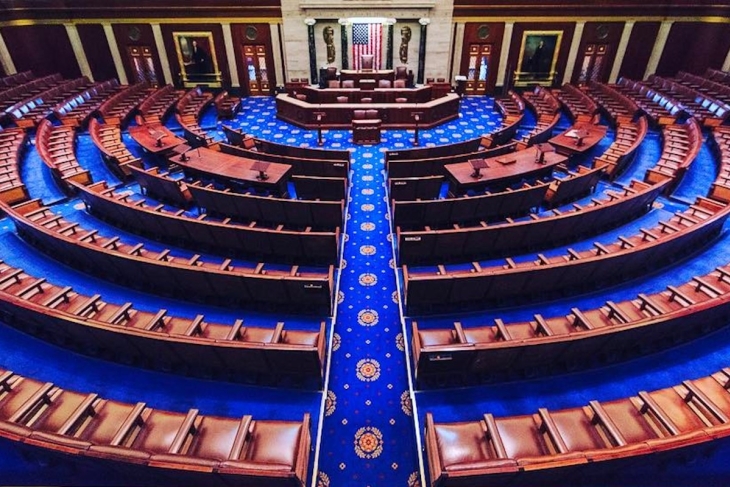In last week’s Gadfly, Karen Nussle and Lorén Cox penned a thoughtful piece on “cross-partisanship,” a concept they explore at greater length in a very nice paper for the Aspen Institute’s Education & Society Program. Both repay attention.
In the short (Gadfly) version, they also purport to disagree with my own assertion in this space a few weeks earlier titled “Education reform is a bipartisan endeavor.” That piece was a response to an essay that Rick Hess and Mike McShane had derived from their excellent new book—and I delved deeper into the book in yet another Gadfly piece a little later. The line that I suspect caught Karen’s and Lorén’s eye was my assertion that “pretty much everything of lasting value in the ed-reform space has been bipartisan,” immediately followed by the caution that “while it’s surely worth striving for that kind of unity going forward, it’s not going to be simple.”
Karen and Lorén mostly agree with me that bipartisanship in education policy has historically been important and remains desirable but is increasingly hard to attain. Then they go on to suggest a quasi-alternative strategy that they term “cross-partisan,” which they believe is easier to attain in today’s schismatic and siloed climate. Their Aspen paper offers a number of recent examples that they take as illustrating the feasibility of cross-partisanship, including the widespread embrace by policymakers of all stripes of the “science of reading” and similar attention across party lines to the teacher shortage—though it might be added that the former is more like a solution, the latter more like recognition of a problem.
How big a deal is the distinction between bi- and cross-partisan policymaking? As I reflect on this seeming disagreement, it’s closer to hair-splitting, a sort of strategic accommodation to contemporary realities that may, in the end, be more like a shift of terminology than a fundamental change.
Here’s the key bit from their Aspen paper:
In our analysis of the state policy landscape over recent years, we found numerous policy initiatives that have garnered bipartisan, or more aptly, cross-partisan support. The term “cross-partisan” is employed to reflect a contemporary understanding of political collaboration, as the traditional notion of bipartisanship has evolved. Historically, bipartisanship was highly regarded, symbolizing a commendable compromise and a collective victory. However, the current political climate often interprets bipartisanship as a capitulation to opposing views, diminishing its value for some. While we remain hopeful for a shift back to a more positive perception of bipartisan efforts, the present reality necessitates a different perspective. Despite these changes, it is noteworthy that various policy proposals continue to receive backing from diverse political spheres. These instances of support, though possibly stemming from varied motivations, exemplify what we now describe as “cross-partisan”—a term denoting support that transcends traditional partisan boundaries, resulting in either a public demonstration of support from people with differing political philosophies or a tangible policy accomplishment.
A welcome insight within that quote is that, because “bipartisanship” these days may connote compromise, each side “giving up” something it wants in pursuit of a “deal” all can agree on, it can be viewed as “capitulation,” thus something your “base” won’t like and is therefore to be shunned.
I suppose that’s so, which will certainly tend to taint the term “bipartisan.” But is “cross-partisan” substantively different or just a different term for old-fashioned horse-trading and deal-making in pursuit of getting something done that needs doing for the betterment of one’s community, state, or nation? Is “transcends traditional partisan boundaries” really different from “working together across party lines” or “working in bipartisan fashion”? I’m not so sure. And some of their discussion of the circumstances that make cross-partisan possible sound awfully like bipartisan, such as “both sides get a win.”
Still, my main point was more historical: Pretty much every important education policy event in memory that’s had any staying power has had a measure of support from both Democrats and Republicans in the relevant jurisdiction, whether upon enactment or gradually, as the “other team” came to accept it, tweak it, sustain it. If policies don’t have staying power, they get very little traction. The next election leads to them being undone or reversed—and practitioners, knowing this, can slough them off with a “this too shall pass” attitude. We can point to innumerable examples of things not enduring because the next team hadn’t bought into them and didn’t agree with them. (Consider New York City education post-Bloomberg, now partly reversed again under Eric Adams.) Things that had broad-based political support—think MCAS up to this point in Massachusetts—have stuck around and thus had impacts. (Speaking of which, this oft-controversial test, first enacted in 1993 during the administration of Republican-libertarian Bill Weld, hated by the teachers union and now on the ballot for possible repeal by Bay State voters, has just gained the support of the most liberal Democratic governor Massachusetts has had in ages.)
I can certainly see exceptions emerging in places that are deep red or deep blue (today’s Ohio, Texas, California, New York, etc.), where the policy reins never pass to the other party. In those situations, one might have policy stability without bipartisanship. But I don’t think that’s ever happened in education at the federal level, and there are a lot of purplish states and localities where one-party support augurs policy instability.
If you prefer “cross-partisan,” fine. Maybe it’s more macho, better for appealing to crazed political bases. But it’s really not all that different.




